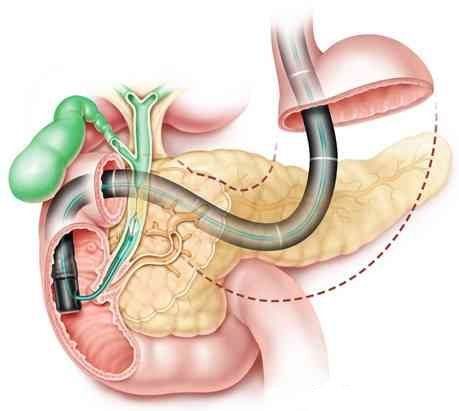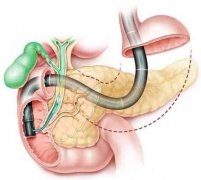 面对困难插管,早期括约肌预切开术可减少ERCP术后胰腺炎:一项随机试验
面对困难插管,早期括约肌预切开术可减少ERCP术后胰腺炎:一项随机试验
摘要:
括约肌预切开术是一种通常用于内镜逆行胰胆管造影(ERCP)治疗胆管疾病困难胆道插管的技术,并且被认为是ERCP术后胰腺炎(PEP)的一项危险因素,但是这种风险是与技身本身有关还是与之前的反复胆道插管有关尚不清楚。 这项研究的主要目的是评估早期预切开与常规操作相比在困难的胆管插管患者中的PEP发生率,其次比较并发症和插管成功率。在这项前瞻性、多中心、随机临床试验中,接受治疗性ERCP胆道困难插管的患者被随机分为早期预切开(A组)或反复乳头插管,最后失败,晚期切开(B组)两组。PEP被定义为在术后超过24小时,血清胰酶高于正常水平的三倍以上并伴有与其相关的上腹部疼痛发作。所有患者均没有使用直肠吲哚美辛栓或双氯芬酸钠来预防胰腺炎。共有375名患者入选,A组185例中有10例(5.4%)发生PEP,B组190例中有23例(12.1%)发生PEP(优势比[OR] 0.35,95%置信区间[CI] 0.16-0.78),早期预切组PEP发生率(10/185,5.4%)显著低于晚预切组(19/135 [14.1%]; OR 0.42,95%CI 0.17 - 1.07),胆管插管成功率、出血、穿孔和胆管炎发生率没有差异。对于胆道困难插管患者,早期括约肌预切开是一种有效的技术,可显著降低PEP的发生率,反复的胆管插管尝试是这种并发症的真正危险因素。
Early precut sphincterotomy for difficult biliary access to reduce post-ERCP pancreatitis a randomized trial.
Mariani A, Di L M, Giardullo N, et al. Endoscopy, 2016, 48(06):530-535.
Abstract
BACKGROUND AND STUDY AIM: Precut sphincterotomy is a technique usually employed for difficult biliary cannulation during endoscopic retrograde cholangiopancreatography (ERCP) for the treatment of bile duct disease. It is a validated risk factor for post-ERCP pancreatitis (PEP), but it is not clear whether the risk is related to the technique itself or to the repeated biliary cannulation attempts preceding it. The primary aim of the study was to assess the incidence of PEP in early precut compared with the standard technique in patients with difficult biliary cannulation. Secondary aims were to compare complications and cannulation success.
PATIENTS AND METHODS: In this prospective, multicenter, randomized, clinical trial, patients who were referred for therapeutic biliary ERCP and difficult biliary cannulation were randomized to early precut (Group A) or repeated papillary cannulation attempts followed, in cases of failure, by late precut (Group B). PEP was defined as the onset of upper abdominal pain associated with an elevation in serum pancreatic enzymes of at least three times the normal level at more than 24 hours after the procedure. No rectal indomethacin or diclofenac was used for prevention of PEP.
RESULTS: A total of 375 patients were enrolled. PEP developed in 10 of the 185 patients (5.4 %) in Group A and 23 of the 190 (12.1 %) in Group B (odds ratio [OR] 0.35; 95 % confidence interval [CI] 0.16 - 0.78). The incidence of PEP was significantly lower in the early precut group (10/185, 5.4 %) than in the delayed precut subgroup (19/135 [14.1 %]; OR 0.42, 95 %CI 0.17 - 1.07). There were no differences in biliary cannulation success rates, bleeding, perforation, and cholangitis.
CONCLUSIONS: In patients with difficult biliary cannulation, early precut is an effective technique and can significantly reduce the incidence of PEP. Repeated biliary cannulation attempts are a real risk factor for this complication.
翻译:于廷廷 审校:张立超、侯森林 (Endoscopy, 2016 )



